Accessibility and Contact
This project presents multimedia materials using floating windows. If you are having trouble accessing any of this text, please feel free to contact the author (iamdan@unc.edu).
On this page, you will also find a version of the project designed to provide access to the materials should you have trouble. This page is divided into sections representing the main nodes of the project. It also contains links to sub-sections of the project.
Opening
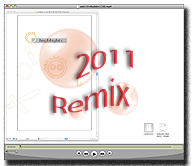 The 2011 remix version of the main video opens this project.
The 2011 remix version of the main video opens this project.(Video Transcript for 2011 Remix)
The Map
I'm trying to do two things. One, I want to talk about performance and emergence. I'm going to mix that discussion. At times, I discuss performances that inform this project. At times, I look at what emerges from those performances. But both of those moves are provisional, and the project really explores how performance and emergence flow in circuit with each other at the moments where performancemergence happens.
And two, I want to describe how I made/am making the video/performance, "Watch the Bubble." That work involves recovery and release, a mobius compositional loop that looks back and flows forward as the reflections are mixed into the project before you. I can't stop (re)mixing this project any more than I could not flow along with time. We can loop backwards, play with the circuits, but never stop the current.
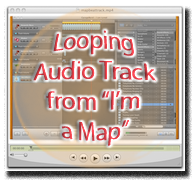 It
probably makes sense to start with a recent instance informing this mix. Prior to this project, I created a
piece called “I’m a Map; I’m a Green Tree,” a screencast poem with a theoretical focus. For that piece, I wanted music, so I created my own soundtrack using samples in
GarageBand. That screencast is mostly
a conventional mix of edited segments, but the backing music got me thinking about real-time performance and audio tracks.
It
probably makes sense to start with a recent instance informing this mix. Prior to this project, I created a
piece called “I’m a Map; I’m a Green Tree,” a screencast poem with a theoretical focus. For that piece, I wanted music, so I created my own soundtrack using samples in
GarageBand. That screencast is mostly
a conventional mix of edited segments, but the backing music got me thinking about real-time performance and audio tracks.
As I began experimenting with the audio options for "Watch the Bubble," I found myself pulled back toward an approach to screen recording that I had experienced many years earlier when tools had fewer options. Many of my first screencasts and voiceovers were one-take captures. If I clicked the wrong link or tripped over a word, I would scrap the recording and start over. There were lots of cast away takes: almost good enough, but try again; flubbed it three-quarters of the way through, try again. And eventually the planning, the speaking, and the screen recording would gel and a complete performance would emerge.
For early takes of "Watch the Bubble," I tried similar live capturing of audio to form the soundtrack for the project, using the screen recorder, SnapZ. I recognized in SnapZ’s inability to pause the recording the same real-time constraint I had experienced when first learning to screencast. The approach might called screen performance. Rather than pausing a recording to arrange materials and compose, I would turn on the recorder and capture movements in a single take.
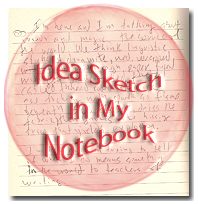 Idea sketch in my notebook: Page 1
Page 2
Page 3
Page 4
Page 5
Page 6
Page 7
Page 8
Page 9
Page 10
Page 11
Page 12
Idea sketch in my notebook: Page 1
Page 2
Page 3
Page 4
Page 5
Page 6
Page 7
Page 8
Page 9
Page 10
Page 11
Page 12
Conceptually, “I’m a Map” also got me ready to create “Watch the Bubble” by pushing me
further toward alt-scholarship, a mode that (for me) foregrounds creativity and performance.
In "I'm a Map," I performed a blend of poetry and theoretical reflections.
"Watch the Bubble" picks up on this impulse and pushes in a different direction, primarily through
its focus on memoir and manifesto. For “Watch the Bubble,” I knew the subject of the piece was going to be my take on the history of digital composing.
I began with some sketching of ideas on paper. The first page from my notes shows the way that the project
emerges from the earlier performance of "I'm a Map" with the refrain that kicks off the invention sketch:
"I'm here and I'm talking about words and magic." The refrain drifts into a poemish brainstorm, and then moves
into some questions related to "Watch the Bubble." The emergent stream from the earlier project becomes performance
as the sketch of ideas evolves.
(Video Transcript for Looping Audio Track from "I'm a Map.")
The Bubble
"Watch the Bubble" pushes alt-scholarship through mixed memoir and manifesto. I offer a personal statement that becomes a teaching philosophy that merges with a history of the field of computers and writing. As with my earlier projects, some of my composing was driven by intellectual property concerns. I wanted to incorporate a soundtrack and make the piece public, but did not want to reproduce the GarageBand approach from my previous project. I thought I might use a live recording presented in a YouTube video. My initial sense of how this might work was quite vague. In fact, I thought I would first play around with capturing some sound in this way by recording snippets from YouTube videos just to get a feel for the moves and issues involved. The plan was to later screen record something from archive.org.
There is no overstating the role of experimentation and serendipity here. The music choice, from my perspective, is characterized strongly with emergence. Pandora was playing on my iPad, and I liked what was coming out of the speaker, so I checked the name of the band (Explosions in the Sky).

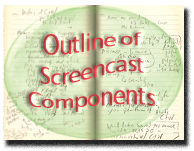 Of course, the emergence in that moment is linked with other moments and itself becomes performative.
There was an image file lying on the desktop with some
gears and other logo elements left over from a journal project. I began performing edits to the image while the video played.
I quickly flubbed things, then restarted the screen recorder.
I started playing with browser windows to bring in elements from my history with computers and writing. I felt
like there was a convergence between the song and the materials I was arranging on screen.
My process was to rough out a flow of screens over which I could eventually develop narration to make
specific points. Before going on, I created a rough outline of the pieces I would like to cover in the performance.
Of course, the emergence in that moment is linked with other moments and itself becomes performative.
There was an image file lying on the desktop with some
gears and other logo elements left over from a journal project. I began performing edits to the image while the video played.
I quickly flubbed things, then restarted the screen recorder.
I started playing with browser windows to bring in elements from my history with computers and writing. I felt
like there was a convergence between the song and the materials I was arranging on screen.
My process was to rough out a flow of screens over which I could eventually develop narration to make
specific points. Before going on, I created a rough outline of the pieces I would like to cover in the performance.
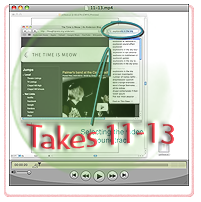 For the first three rough
recorded performances, things were very organic--not much storyboard or script, just playing around with the screen and ideas.
Videos from this stage of the project reveal the development process as a blend
of emergence as I pull from rough sketches and earlier projects and performance as I
improvise directions and act out the movements on the screen.
For the first three rough
recorded performances, things were very organic--not much storyboard or script, just playing around with the screen and ideas.
Videos from this stage of the project reveal the development process as a blend
of emergence as I pull from rough sketches and earlier projects and performance as I
improvise directions and act out the movements on the screen.
(Video Transcript for Takes 11-13)
23 Files
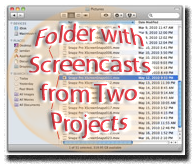 Toward the end of "Watch the
Bubble," the narration notes that the version used in the video is the
twenty-third take. This is incorrect. It's impossible to determine the
precise number of takes since many incomplete recordings have been
discarded. Additionally, the number of "complete" takes for the project
is actually thirteen. The total count referenced in the
narration also includes those from the earlier project, "I'm a Map." It's
clear that the two projects share much, but not accurate to say that the
first ten takes are iterations of the bubble recordings. Still, the miscounting of the
number of video captures speaks to the way the bubble emerges from the map.
Toward the end of "Watch the
Bubble," the narration notes that the version used in the video is the
twenty-third take. This is incorrect. It's impossible to determine the
precise number of takes since many incomplete recordings have been
discarded. Additionally, the number of "complete" takes for the project
is actually thirteen. The total count referenced in the
narration also includes those from the earlier project, "I'm a Map." It's
clear that the two projects share much, but not accurate to say that the
first ten takes are iterations of the bubble recordings. Still, the miscounting of the
number of video captures speaks to the way the bubble emerges from the map.
The final script maintains the reference to twenty-three takes mainly because that observation, though incorrect, is also right for the project. The number emerged in the idea stream as the many iterations were practiced, performed, recorded, discarded, or saved. The ten early videos and the thirteen new captures push twenty-three into the script. The rhythm of the prose reflects the fit. I can't imagine composing a phrase like "the thirteenth take of a ten-minute moment," because "the twenty-third take of a ten-minute moment" bubbled right into the mix.
Credit the hyperiteration of the project. Each saved capture represents a number of practice sessions, false starts, refinements, and improvisations. In the earlier stages, I was more prone to save these recordings to capture the invention taking place in the performance. Other captures acted more as practice sessions for future performances and would be stopped and discarded at multiple points along the way. Later captures were saved more frequently as "almost there" moments.
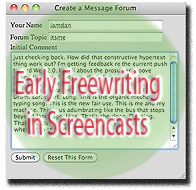 Early Freewriting in Screencasts:
Capture 11
Capture 13
Capture 14
Capture 15
Capture 16
Capture 17
Early Freewriting in Screencasts:
Capture 11
Capture 13
Capture 14
Capture 15
Capture 16
Capture 17
In concert with these iterations, we find repetitions and revisions of the composing moves. In the earliest takes, for instance, the typing was spontaneous, emerging with the rhythm of the backing sounds and pulling from ideas floating in my head from multiple projects. Capture 11 and captures 13-16 all represent spontaneous prose performed during the screen recordings. By capture 17, I had made an adjustment and concretized a script for the typing. To enable typing of the script while the screen recorder played, I loaded the script into a text editor and used the text-to-speech feature. In the final version of the text file with the typing script I had to embed pauses so that my typing could keep up with the machine reading. As the text-to-speech played in my earphones, this is what I heard as I typed:
Text-to-speech recording of typing script: typingscript.mp3
After capture 17, I used the spoken script to enable the "spontaneous" typing. This development brought some additional layers of complexity to the performance itself. I placed the text file with the talking typing script on a separate laptop and prepared it for playing. This was necessary because performing the capture with the music in the background precluded playing the text-to-speech on the computer on which I was recording the project. I continued to practice, perform, and capture the basic moves on one machine, but in the middle of the performance would jump to my laptop and switch on the text-to-speech to enable me to keep typing in the recorded performance. The text-to-speech software would perform the script I had written and I would subsequently type the emerging text into a Web browser while the screen capture recorded the action.
Revision
Revisions conducted at every stage of the project provide a lens for looking at performancemergence. Two aspects of the use of file structures bear note. First, the original decision to open html files from folders was spontaneous. After starting the YouTube clip, I decided to display some of my projects archived on my hard drive. I knew I wanted to show the "hybrid://" project, but was not sure where it was located. While the music played and the screen recorder captured, I poked through files. This process meshed with the personal focus and emergent feel of the video.
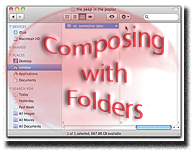 But as I looked at early captures,
I felt like too much time was needed to locate all of the files. I revised the approach by staging browser windows for the performance.
I did retain one instance of browsing
to open a file to sustain the sense of serendipity that bubbled up with the move in the earlier performance.
At some point, I realized that the file
and folder names carried conceptual meaning and that I could compose with the labels for the files and folders.
This realization carried a heavy emergent flow; it was a thought bubble, really.
And the opportunity pulled from earlier writing performances when I decided to incorporate
something from my journal sketches into the folder structure.
But as I looked at early captures,
I felt like too much time was needed to locate all of the files. I revised the approach by staging browser windows for the performance.
I did retain one instance of browsing
to open a file to sustain the sense of serendipity that bubbled up with the move in the earlier performance.
At some point, I realized that the file
and folder names carried conceptual meaning and that I could compose with the labels for the files and folders.
This realization carried a heavy emergent flow; it was a thought bubble, really.
And the opportunity pulled from earlier writing performances when I decided to incorporate
something from my journal sketches into the folder structure.
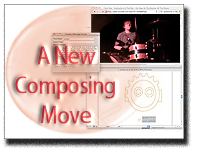 A new composing move:
Capture 20
Capture 21
Capture 22
Capture 23
A new composing move:
Capture 20
Capture 21
Capture 22
Capture 23A related holdover from the initial spontaneous recording of the screen was the use of the comment form that was present in the "hybrid://" project. The annotatable and writable nature of that project in 1998 was of note, but by opening the file from the folders on the hard drive, the ability to save the comments was lost. Much of the disposable typing in captures 11-16 can be attributed to this inability to save the material I created in the performances. To address this in the closing takes, I switched the typing move to a contemporary Web site with comment functionality. This move had a number of consequences. One, I chose to open my personal Web space, shifting the focus of the piece again toward memoir. The move also necessitated adjustments to the layout of the browsers in the recording space. The "hybrid://" comment form loaded in a small window. In the first take using the personal Web space (capture 21), I loaded the page and created a comment and composed the text. During the composition, I realized that the default size of the Web window would make it difficult (in postrecording work) to zoom into the text field for visibility. I finished the recording to create a complete capture, but knew I would need to resize the browser. For capture 22, I resized the window, getting closer to a workable arrangement. For capture 23, I increased the display size of the Web browser and adjusted the window yet again to come up with an optimal typing space.
(Video Transcript for Composing with Folders)
Delivery
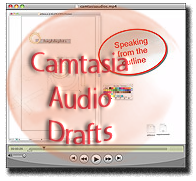 Once an
acceptable performance had been captured on the Mac using SnapZ, the recording was
imported into Camtasia for Windows. More performance played out during the Camtasia stage through the development of the narrative
script. The first full audio narration take is mostly extemporaneous, with some guidance from journal sketches and an outline. The history of
computers and writing is recounted based on the sequence of my projects in the screen capture.
In the next audio take the childhood memories have more presence in the narration.
The decision to make things more personal is hard to trace
but in part emerges from transcribing the first improvisational performance of the voiceover.
Transcription became editing for concision which created gaps in the narration. How to fill them? More personal memories and educational experiences.
Once an
acceptable performance had been captured on the Mac using SnapZ, the recording was
imported into Camtasia for Windows. More performance played out during the Camtasia stage through the development of the narrative
script. The first full audio narration take is mostly extemporaneous, with some guidance from journal sketches and an outline. The history of
computers and writing is recounted based on the sequence of my projects in the screen capture.
In the next audio take the childhood memories have more presence in the narration.
The decision to make things more personal is hard to trace
but in part emerges from transcribing the first improvisational performance of the voiceover.
Transcription became editing for concision which created gaps in the narration. How to fill them? More personal memories and educational experiences.
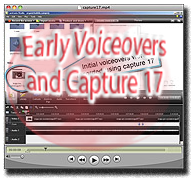 The second audio take is read from the revised transcript of the first. It is much cleaner, but still has some improvised and unfocused parts.
The manifesto is more directly integrated into the narration. If you listen to the entire take you can hear that at
about six minutes, I realize the recording is already a throwaway, but I want
to rework what I've developed so far into yet another revised transcript, so I keep going. I'm improvising and imagining adjustments, recording them aloud to be entered later in the emerging script.
The second audio take is read from the revised transcript of the first. It is much cleaner, but still has some improvised and unfocused parts.
The manifesto is more directly integrated into the narration. If you listen to the entire take you can hear that at
about six minutes, I realize the recording is already a throwaway, but I want
to rework what I've developed so far into yet another revised transcript, so I keep going. I'm improvising and imagining adjustments, recording them aloud to be entered later in the emerging script.
But things quickly looped back again toward performance on the screen. The first attempt to script and tune the screencast using Camtasia began with capture 17. Capture 17 must be redone when a typo in the final screen is recognized. I recorded multiple audio takes under the assumption that I was working with a clean capture of the screen performance. I was hesitant to return to performance mode because so many false starts and discards had already gone into what I thought was a complete take. The typo forced my hand. A good thing, because subsequent captures benefited from the new sense of timing and flow developed while working with drafts of the voiceover. And the personal dimensions of the project that emerge with the move to a new typing window in capture 21 never would have occurred without the looping back into performance performed by the typo in capture 17.
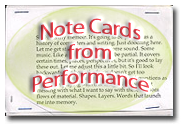 Note cards from performance:
Card 1
Card 2
Card 3
Card 4
Card 5
Card 6
Card 7
Card 8
Card 9
Card 10
Card 11
Note cards from performance:
Card 1
Card 2
Card 3
Card 4
Card 5
Card 6
Card 7
Card 8
Card 9
Card 10
Card 11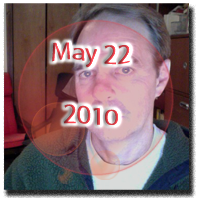 An early delivery
came on May 22nd, 2010 when I presented a version as a deliverator talk at the Computers and Writing conference.
That was my first public performance of the video. I read from note cards to deliver the narration while a copy of the
video with only the soundtrack played on a projection screen. I had practiced enough to know that there was some extra time at the end
of the video and so I filled that up by bringing up a text editor window on my screen while the last of the video played. In that window
I reiterated some of the questions raised during the video.
An early delivery
came on May 22nd, 2010 when I presented a version as a deliverator talk at the Computers and Writing conference.
That was my first public performance of the video. I read from note cards to deliver the narration while a copy of the
video with only the soundtrack played on a projection screen. I had practiced enough to know that there was some extra time at the end
of the video and so I filled that up by bringing up a text editor window on my screen while the last of the video played. In that window
I reiterated some of the questions raised during the video.
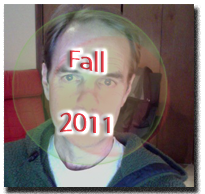
 2011 Note cards:
Card 1
Card 2
Card 3
Card 4
Card 5
Card 6
Card 7
Card 8
Card 9
Card 10
Card 11
Card 12
Card 13
2011 Note cards:
Card 1
Card 2
Card 3
Card 4
Card 5
Card 6
Card 7
Card 8
Card 9
Card 10
Card 11
Card 12
Card 13It wasn't until the fall of 2011 that I began performing it again. I tried it out in class and did a read through with Ashley Hall. Then I performed it at the University of Kentucky and then again at Duke University. In each of those deliveries, the "Truing" video was performed and captured; then as the screen recorder began saving that performance, I launched into the memoir. The "Truing" piece would save, and then as the memoir was wrapping up, I would open and begin playing the recording of the performance. Performance emerging, then emergence performing.
(Video Transcript for Camtasia Audio Drafts)
(Video Transcript for Early Voiceovers and Capture 17)
(Video Transcript for Camtasia Audio Take Two)
(Video Transcript for May 22, 2010 Deliverator Presentation)
(Video Transcript for November, 2011 Presentation)
Remix
After I delivered the project at the 2010 Computers and Writing Conference, Bill Wolff suggested some revisions. I wondered about the memoir genre. Bill thought to cast things as a remix. So began the next iteration of "Watch the Bubble."
 I reworked the script with
remix in mind, weaving in thinking
about emergence. Remix adds the temporal to performance; there's past and present and rolling forward as performance becomes emergence.
Then I began to wonder
if differentiating between mixing and remixing would even be possible. Instead, we find performance and emergence feeding into and from each other.
Performance pushes, with a kind of forward posture; emergence pulls, with an almost reflective bent, then quickly slips forward again into performance.
There is mixing and remix but always more mixing. You can see some of my initial tinkering with these ideas in early script revisions.
I reworked the script with
remix in mind, weaving in thinking
about emergence. Remix adds the temporal to performance; there's past and present and rolling forward as performance becomes emergence.
Then I began to wonder
if differentiating between mixing and remixing would even be possible. Instead, we find performance and emergence feeding into and from each other.
Performance pushes, with a kind of forward posture; emergence pulls, with an almost reflective bent, then quickly slips forward again into performance.
There is mixing and remix but always more mixing. You can see some of my initial tinkering with these ideas in early script revisions.
I began printing out and revising the script multiple times. The revisions below show early adjustments that contextualize some of the references to the discipline of computers and writing. And the script shows me rethinking my philosophical take on the field, which we see in the reshaping of the closing. The video soundtrack in some ways dominates the end of the piece and I wanted to increase the presence of the narrative text--to have the narration run longer and be more in the mix. So I began to dial up the manifesto, working the closing questions in the piece into a longer segment about what we will say when we have our say about education. (I'm writing this in November, 2010.) I find more frustration seeping into the revisions. Perhaps this is more of the memoir. I'm tired of justifying joy in teaching, of placing the studio classroom in the basement, of worrying about what I might say. (Of course, I've since revised the piece again, giving it a more hopeful feel.)

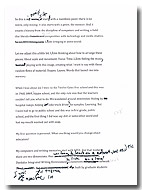 First sample draft from voiceover script:
Page 1
Page 2
Page 3
Page 4
Page 5
First sample draft from voiceover script:
Page 1
Page 2
Page 3
Page 4
Page 5
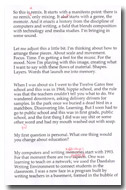 Second sample draft from voiceover script:
Page 1
Page 2
Page 3
Page 4
Page 5
Second sample draft from voiceover script:
Page 1
Page 2
Page 3
Page 4
Page 5
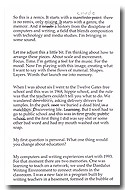 Third sample draft from voiceover script:
Page 1
Page 2
Page 3
Page 4
Page 5
Third sample draft from voiceover script:
Page 1
Page 2
Page 3
Page 4
Page 5
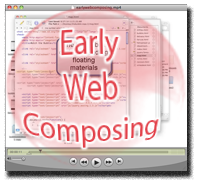 After a revised script emerged, the project went back to Camtasia for another round of adjustment.
And then, the composing of these Web materials began to shape things. I wanted a fixed screen project with floating windows.
The fancybox approach worked well, but had issues with displaying a video player. I moved
the project videos to Vimeo. In some ways, those/these videos floating on the Web are the leading performative edge of the project.
After a revised script emerged, the project went back to Camtasia for another round of adjustment.
And then, the composing of these Web materials began to shape things. I wanted a fixed screen project with floating windows.
The fancybox approach worked well, but had issues with displaying a video player. I moved
the project videos to Vimeo. In some ways, those/these videos floating on the Web are the leading performative edge of the project.
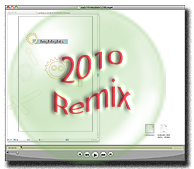
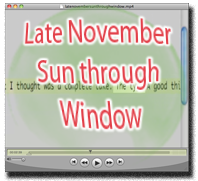 In November of 2010, I took a break from remixing the main video and drafting Web pages and reflections. I wasn't
satisfied with where the piece concluded. I felt and wanted to feel some of the hurt in the performance.
But I also wished the piece had a more hopeful tone--less questioning and edge. But performance (at that moment) fell short and
what had emerged became solid, a memory thread colored with emotions and stranded with ideas and
phrasings that had bubbled up during the composition over the months.
I produced a kind of companion piece, "Late November Sun Through Window," which captures some of the tweaks and my thinking as the November, 2010 iteration eased.
In November of 2010, I took a break from remixing the main video and drafting Web pages and reflections. I wasn't
satisfied with where the piece concluded. I felt and wanted to feel some of the hurt in the performance.
But I also wished the piece had a more hopeful tone--less questioning and edge. But performance (at that moment) fell short and
what had emerged became solid, a memory thread colored with emotions and stranded with ideas and
phrasings that had bubbled up during the composition over the months.
I produced a kind of companion piece, "Late November Sun Through Window," which captures some of the tweaks and my thinking as the November, 2010 iteration eased.
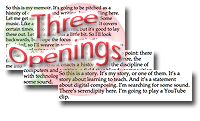 Three openings:
May 22 performance
November 2010 script
November 2011 script
Now in November of 2011, I have been revisiting the piece. I reworked the script to make it more open ended.
The new opening segment recalls the earlier focus on memoir. The November 2010 version cast things as remix.
Now I just call the piece a story. And early focus on the discipline of computers and writing has been turned down. The piece is still a memoir and field history,
but now tries to just be (and be about) digital composing.
Three openings:
May 22 performance
November 2010 script
November 2011 script
Now in November of 2011, I have been revisiting the piece. I reworked the script to make it more open ended.
The new opening segment recalls the earlier focus on memoir. The November 2010 version cast things as remix.
Now I just call the piece a story. And early focus on the discipline of computers and writing has been turned down. The piece is still a memoir and field history,
but now tries to just be (and be about) digital composing.
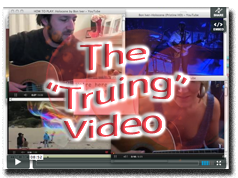 Part of the process of remixing "Watch the Bubble" in 2011 can be attributed to work done with a new video called "Truing." That video also plays with layers of sound and movement
and performance. Performing work on the new video, fed back into remixing of the script for "Watch the Bubble."
For the November, 2011 version, at one point, other than the reworked opening,
I found myself fidgeting with small changes to the script. Then an edit sparked a shift. I was not satisfied with the phrasing of, "The question is how now."
I changed it
to, "The question is what to say." That flowed right into "Seriously, what do we say now?" And that lead to more words responding to the
question. These pen on paper sketches formed the basis for the revised closing and owe much of their emergence to the "Truing" video.
"Do we write these shapes by making them?" and "Do we blow them into being like glass?" reference time spent with the craft motifs of the "Truing" piece. And "Truing" lets us
"say to beauty, this is truth" and makes the piece more fully wrought with some of the poetic references layered into the scripts. the November, 2011 version
emerges from the
piece that came after it.
I'd like to think the video also helped me change
the questioning, "Will we?" to the more true, "We will."
Part of the process of remixing "Watch the Bubble" in 2011 can be attributed to work done with a new video called "Truing." That video also plays with layers of sound and movement
and performance. Performing work on the new video, fed back into remixing of the script for "Watch the Bubble."
For the November, 2011 version, at one point, other than the reworked opening,
I found myself fidgeting with small changes to the script. Then an edit sparked a shift. I was not satisfied with the phrasing of, "The question is how now."
I changed it
to, "The question is what to say." That flowed right into "Seriously, what do we say now?" And that lead to more words responding to the
question. These pen on paper sketches formed the basis for the revised closing and owe much of their emergence to the "Truing" video.
"Do we write these shapes by making them?" and "Do we blow them into being like glass?" reference time spent with the craft motifs of the "Truing" piece. And "Truing" lets us
"say to beauty, this is truth" and makes the piece more fully wrought with some of the poetic references layered into the scripts. the November, 2011 version
emerges from the
piece that came after it.
I'd like to think the video also helped me change
the questioning, "Will we?" to the more true, "We will."
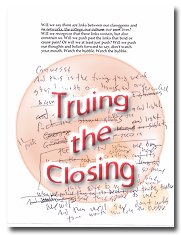
 As I've worked on these projects, I've grown more comfortable with thinking that scholarship can be
about response in its various (and mostly unpracticed) visceral and
personal forms. And I'm comfortable with substituting craft for
critique. I don't believe these are issues of mode.
As I've worked on these projects, I've grown more comfortable with thinking that scholarship can be
about response in its various (and mostly unpracticed) visceral and
personal forms. And I'm comfortable with substituting craft for
critique. I don't believe these are issues of mode.
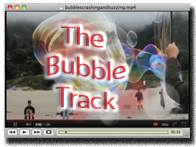 Crafting happens in
word or image or sound and such. I do, however, feel that digital
transformations create chances for changes and the
dangers are in the familiar scholarly grooves. Some of that is wrought into the
narration of a bubble video track that appears in "Truing," although the only path to those
ruminations is here through the clip unraveled from its layers. And even that scholarly track is backed by music. Things are never single-layered. They are always rich and
harmonic. Truing and watching the bubble makes the scholarship overtly so.
Crafting happens in
word or image or sound and such. I do, however, feel that digital
transformations create chances for changes and the
dangers are in the familiar scholarly grooves. Some of that is wrought into the
narration of a bubble video track that appears in "Truing," although the only path to those
ruminations is here through the clip unraveled from its layers. And even that scholarly track is backed by music. Things are never single-layered. They are always rich and
harmonic. Truing and watching the bubble makes the scholarship overtly so.
(Video Transcript for Electronic Edits)
(Video Transcript for Early Web Composing)
(Video Transcript for 2010 Remix)
(Video Transcript for Late November Sun Through Window)